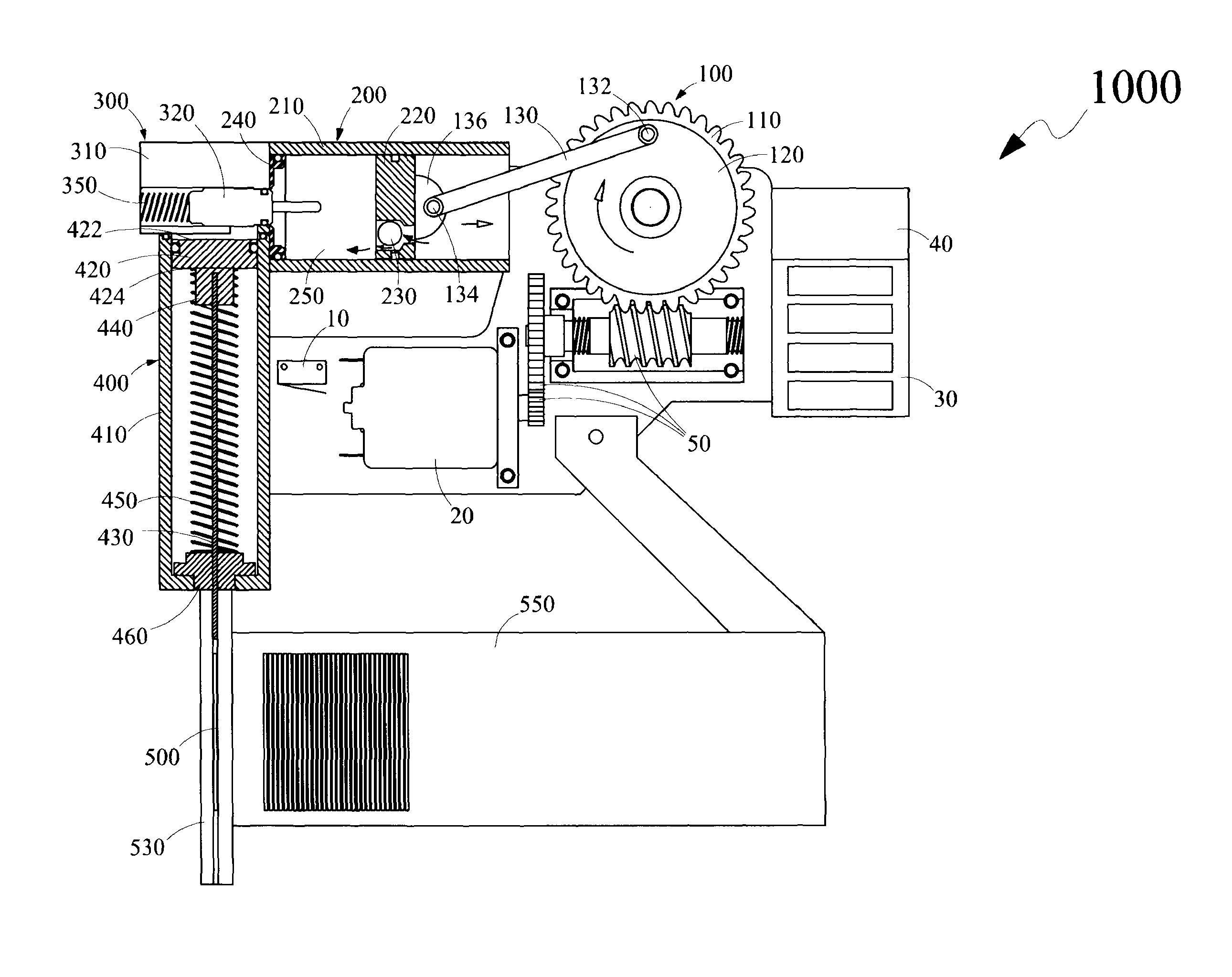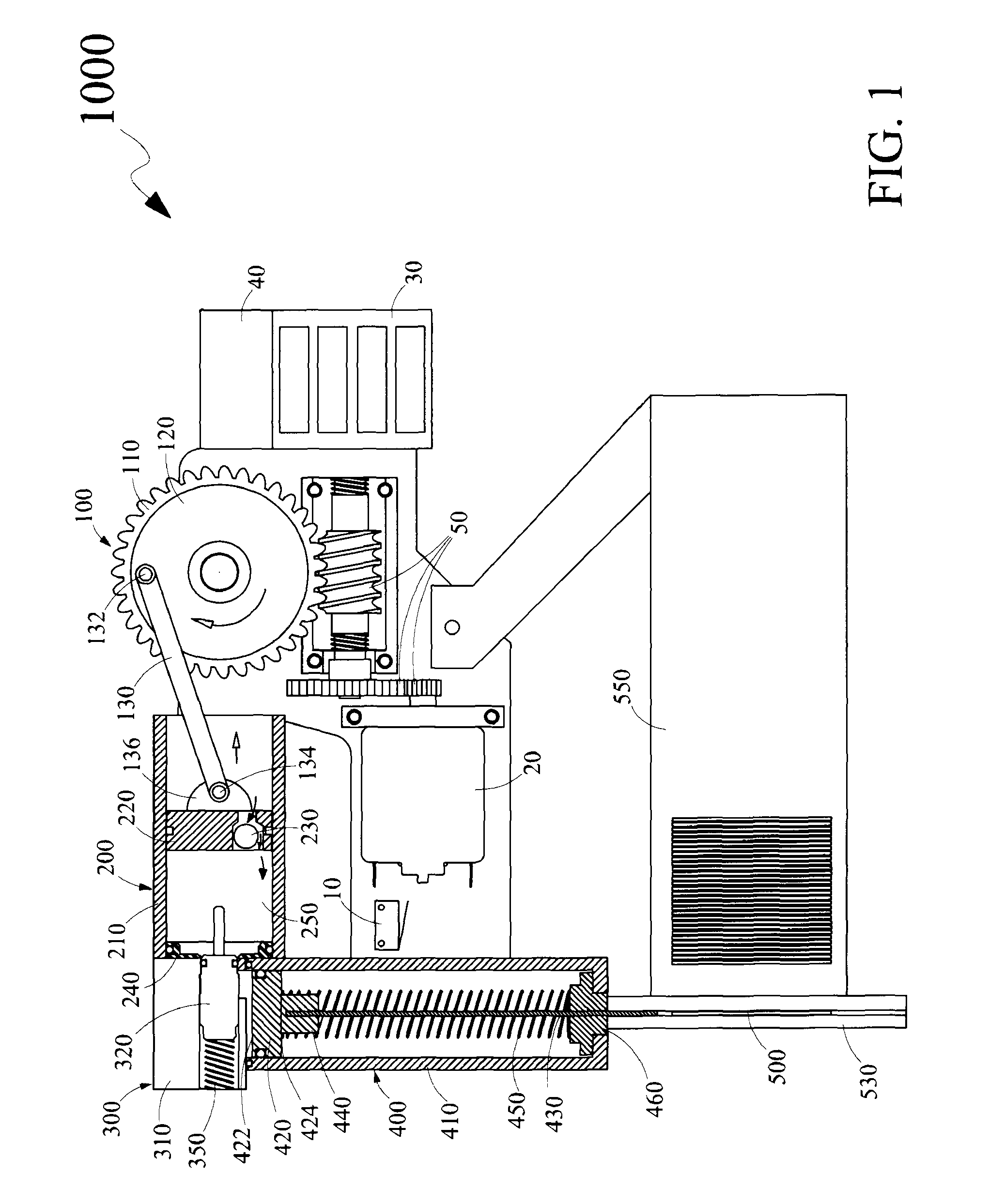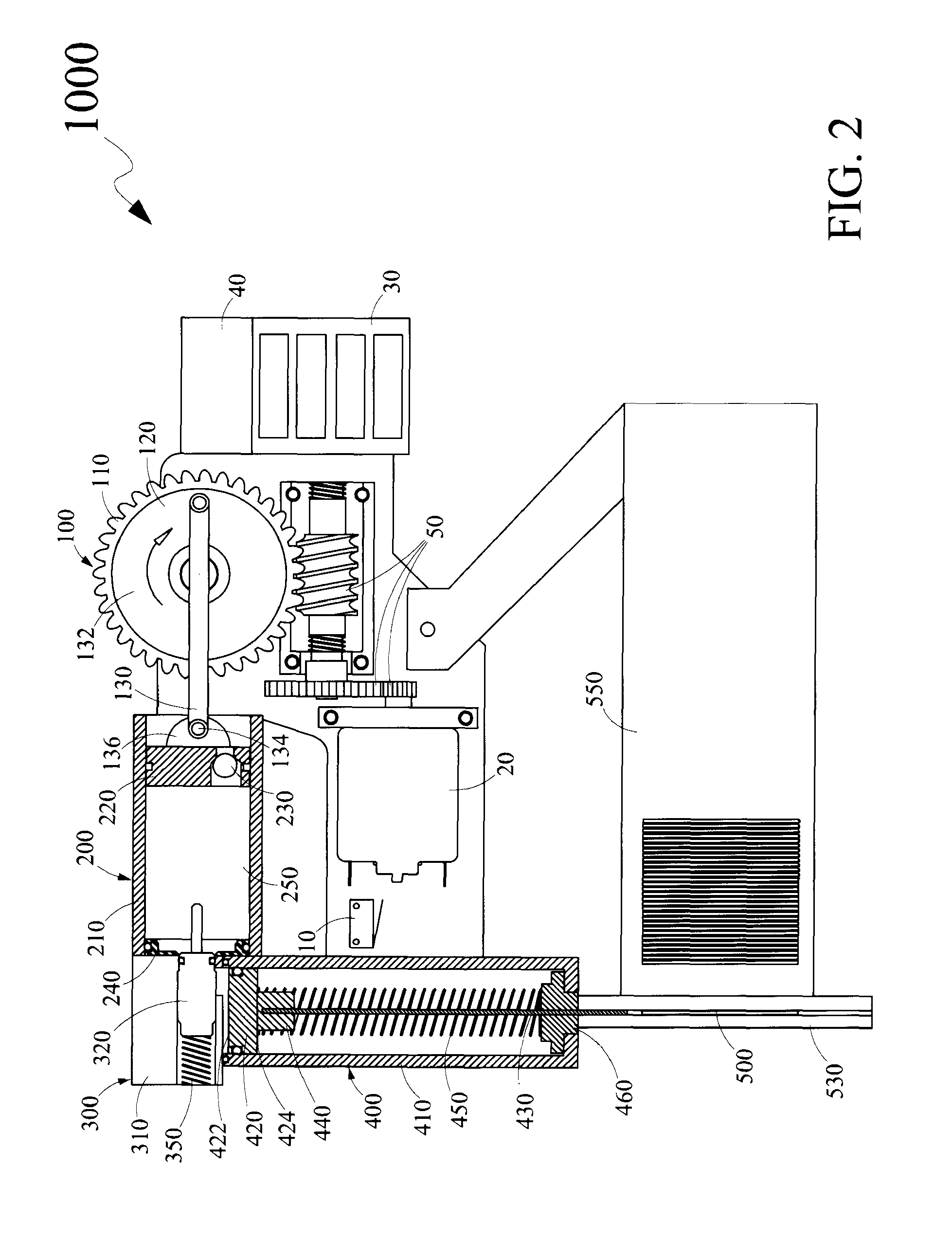Such fastener driving systems may either be portable (i.e., not connected or tethered to an
air compressor or wall outlet) or non-portable.
However, this design is complicated and is more expensive then a standard pneumatic
nail gun.
Such fuel
cell driven units also have certain disadvantages: the chambering of an explosive mixture of fuel; the use of consumable fuel cartridges; a loud report; and the release of
combustion products.
These units have limited application to short sized fasteners, are subjected to high reactionary forces on the user, and are limited in their repetition rate.
The high reactionary force is a consequence of a comparatively long time it takes to drive the fastener into the substrate.
Additionally, because of the use of mechanical springs or solenoids, the ability to drive larger fasteners or longer fasteners is severely restricted, thereby relegating these units to a small niche range of applications.
Further, a
disadvantage of the solenoid driven units is that the above-mentioned unit must be plugged into an electrical power source in order to have enough
voltage to create the force needed to drive even short fasteners.
The primary drawback to such a unit is the large weight and size as compared to the pneumatic counterpart.
Additionally, the drive mechanism is very complicated in configuration, thus requiring a high retail cost in comparison to the pneumatic
nail gun.
The disadvantage in this design is increased operator fatigue, as the actuation technique is a series of blows rather than a single drive motion.
A further disadvantage is that the multiple
impact design requires the use of an
energy absorbing mechanism once the nail is seated, with such mechanism being needed to prevent the anvil from causing excessive damage to the substrate as it seats the fastener.
Furthermore, the multiple
impact designs are not efficient because of the constant motion reversal limiting the operator production speed.
There are several drawbacks existing to this technique.
First, this technique comprises a
complex system of compressing and controlling the spring and in order to store sufficient energy the spring has to be very heavy and bulky.
Second, the spring suffers from fatigue, which gives the tool a very
short life.
Furthermore,
metal springs have to move a significant amount of
mass in order to decompress, which results
low speed nail drivers that place a high reactionary force on a user.
Although some of the drawbacks of the above-mentioned technique using the
potential energy storage mechanisms in the form of a mechanical spring were overcome by the use of
air spring, the application of
air spring is subject to other limitations.
The primary drawback is the safety
hazard in the event of anvil jamming on the downward
stroke.
If the fastener
jams or buckles within the feeder and an operator tries to clear the jam, the operator may be subjected to the full force of the anvil, as the anvil is predisposed to the down position.
Another disadvantage is the need to feed the fastener once the anvil clears the fastener on the backward
stroke, which increases the time needed to operate the device and can result in
jams and poor operations, especially with longer fasteners.
A further disadvantage to the
air spring results from the need to have the ratcheting mechanism as part of the anvil drive.
This weight causes significant problems in controlling the fastener drive since the weight must be stopped at the end of the
stroke.
This
added mass slows the fastener drive stroke and increases the reactionary force on the operator.
Additionally, because significant
kinetic energy is contained within the air spring and
piston assembly, the unit suffers from poor efficiency.
This technique is also subject to a complicated drive
system for
coupling and uncoupling the air spring and
ratchet from the drive
train, which increases the production cost and reduces the system reliability.
The drive or compression mechanism used in this technique is limited in stroke and thus is limited in the amount of energy which can be stored and introduced into the air
stream.
Furthermore, the compression mechanism is bulky and complicated.
Also, the timing of the motor is complicated by the small amount of time between the release of the piston and anvil
assembly from the drive mechanism and its subsequent re-engagement.
The anvil begins in the retracted position, which further complicates and increases the size of the drive mechanism.
Furthermore, the method of activation by compressing the air to full energy and then releasing off the tip of the gear while under full load causes severe mechanism wear.
The drawback of this technique is the problem of
coupling the
flywheel to the driving anvil.
This technique includes the use of a friction clutching mechanism that is complicated, heavy and subject to wear.
Further limitation of this approach is the difficulty in controlling the energy in the fastener driving system, as the mechanism requires enough energy to drive the fastener, but retains significant energy in the
flywheel after the drive is complete, again increasing the technique complexity and size.
Further, what is needed is a device that is not fatiguing, is noiseless, portable, and non-hazardous to a user.
 Login to View More
Login to View More 


